Connecting Limited Resources and Creative Ideas to Develop a New Energy Utilization Cycle
What Used to be Disposed of as Garbage is Now Upcycled into a Fine Material
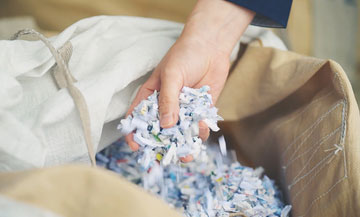
Have you ever heard of the term "upcycling"?
At Epson, we not only recycle used paper to make new paper, but we also implement an upcycling process to add value beyond recycling. For example, the large piles of paper discarded from offices every day are upcycled into ink absorbents for printers, sound absorbents, and even cushioning materials for packaging in addition to new paper. What is generally thrown away as trash is a great resource for Epson.
Dry Fiber Technology for the Future
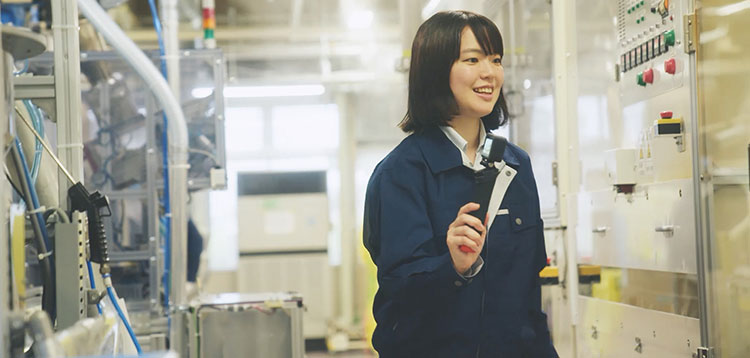
Dry Fiber Technology is Epson's proprietary technology that uses almost no water1 to transform fiber materials into valuable forms and realizes high functionality of materials by converting them into fibers, bonding them, and molding them according to intended use.
Using this technology, Epson is contributing to the conservation of water resources, which is an important global issue, and to a recycling-oriented society. For example, the PaperLab A-8000 uses only about 1/100th2 of the water it takes to make an equivalent mass of ordinary paper, thus helping to conserve the Earth to transform fiber materials into valuable forms and realizes high functionality of materials by converting them into fibers, bonding them, and molding them according to intended use.
1 A small volume of water is used to maintain humidity inside the machine.
2 Water consumption of ordinary paper includes water used in the growth of the trees that supply the virgin pulp. Ordinary paper means paper distributed in Japan. Please see the link for details about the environmental benefits of a PaperLab A-8000, when operated 8 hours per day, 240 days per year.
The Possibilities for Further Resource Utilization will Expand with the Evolution of this Technology
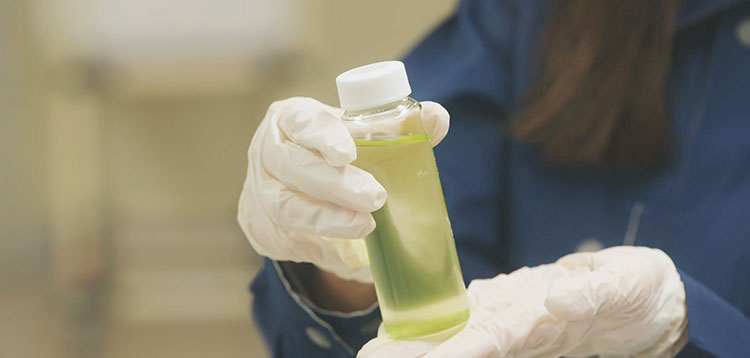
Together with Euglena Co., Ltd. and NEC Corporation, Epson has established the Pararesin Japan Consortium. By applying Dry Fiber Technology, sugar is produced from waste paper, which is then used as nutrients to cultivate the microalgae Euglena to produce bioplastics3.
3 Plastics obtained by chemically or biologically synthesizing and processing renewable biomass resources as raw materials. Even when incinerated, the carbon-neutral nature of biomass reduces the rise in CO2 concentration in the atmosphere.
Recommend
Explore Other Activities
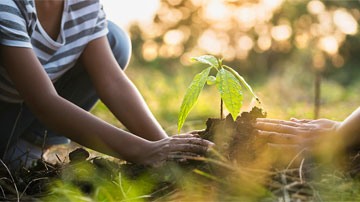
Environment
We are decarbonizing, closing resource loops, and developping environmental technologies that reduce environmental impacts.

Dry Fiber Technology
Technology that produces highly functional materials by defibrating, binding, and forming fibrous materials.
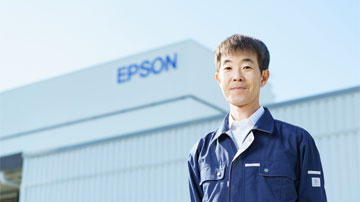
Engineer Interview
(PaperLab)
An engineer on the PaperLab development team talks about the papermaking system and Dry Fiber Technology.

PaperLab In-office Dry Papermaking System
Shrinks your environmental footprint by producing new paper from used paper in a waterless process1.
1 A small volume of water is used to maintain humidity inside the machine.








